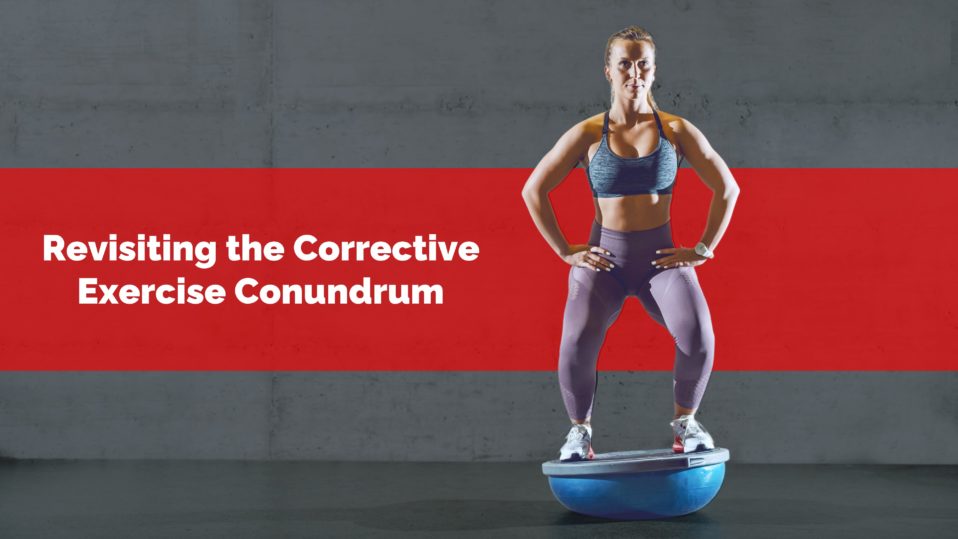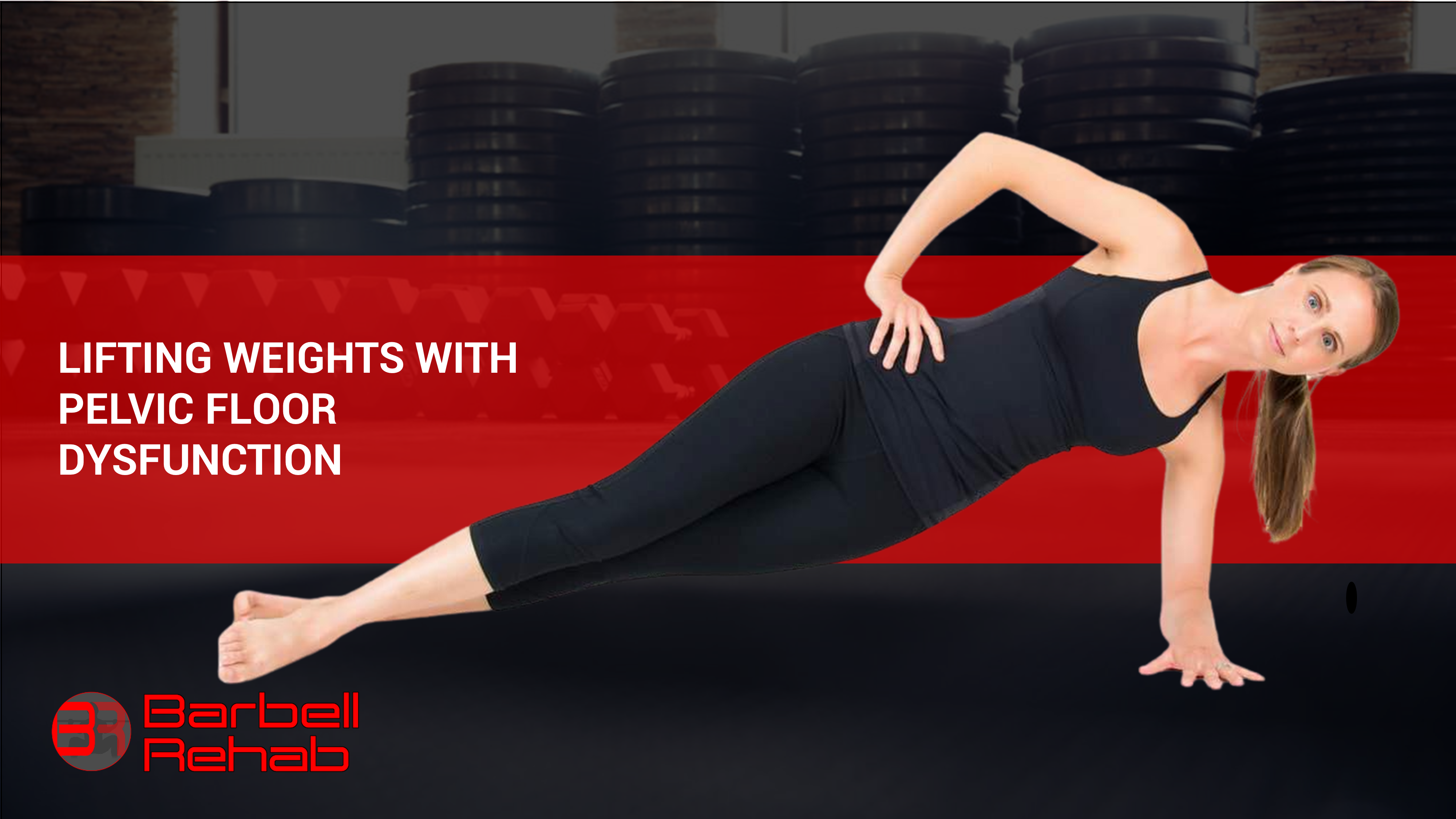It’s been almost four years since Ben Cormack, Jason Silvernail, and Nick Tumminello published “The Corrective Exercise” trap in the National Strength and Conditioning Association Journal. I was just beginning physical therapy school at the time, and as an ambitious young scholar, I was quite pleased with my knowledge and ability to dissect movement faults with my trained eye.
I truly believed my early understanding of how to find and correct movement faults would put me ahead of the curve as a young clinician and quickly boost outcomes for my future patients and clients. As long as I continued to sharpen my coaching eye to pinpoint the specific movement dysfunctions in patients and clients, I believed I’d inevitably have success. Find the specific movement fault, then get to work with a tailored exercise program to fix it. Period. Besides, folks want to know the “true cause” of their symptoms, and with my keen eye, I could provide that for them...but not so fast.
Corrective Exercise: A Shift in Mindset
Then, I caught a glimpse of Cormack, Silvernail, and Tumminello’s 2017 article… It shook me a bit to be honest. Here were three of the sharpest coaches and clinicians in the industry, gracefully chopping down the tree whose fruit I relied on. I highly encourage everyone to read the article themselves, but long story short, here’s what I realized: Corrective exercise simply isn’t the golden cow originally advertised.
Why? Not only are most movement “dysfunctions” normal, but they can also be adaptive. Even if we were able to correct “dysfunctions'', our ability to reliably identify said dysfunction is suspect at best...and we still do not have a reliable way to predict injuries (1). Let me give you one example.
Knee Valgus in the Squat: Much Ado About Nothing?
When I see knee valgus in a squat, clearly that should be corrected with hip abductor strengthening and motor control, no? Not to get too deep into the weeds, but a 2016 paper demonstrated that on average, adductor magnus contributes to more than 50% of the total hip extension moment during the squat (2). Hence, a valgus moment at the bottom of a heavy squat can be very advantageous to facilitate maximal hip extension strength to complete the repetition.
Furthermore, preloading the dense iliotibial band through knee valgus is seen in many elite athletes to leverage energy storage and release to better propel them into the air. This is, however, a nuanced topic, as we do have plenty of research demonstrating ACL tear mechanisms associated with ~25 degrees of knee flexion and dynamic valgus.
Even if we were to try to correct knee valgus in a squat, our typical hip abductor strengthening may not suffice. In a 2015 study exploring hip and knee biomechanics after an experimental reduction in hip abductor strength, the authors found that even though muscle testing showed the hip abductors strength to be reduced by 46% following a superior gluteal nerve block, “no changes in angular kinematics were observed for contralateral pelvic drop, ipsilateral trunk lean, or hip adduction” (3). Some researchers and clinicians have interpreted this to suggest a larger role of the hip external rotators in controlling hip internal rotation disguised as knee valgus, but for now we can only speculate.
Additionally, multiple studies have shown that although an exercise program can attempt to “fix” knee valgus, biomechanics often don’t change even though we see decreased injury prevalence after completing the interventions similar to a FIFA 11 for ACL risk reduction (4). This once again leads to more questions than answers pertaining to the role of motor control and “comprehensive capacity” in overall injury reduction risk (5).
Foot Pronation, Lumbar Flexion, and Scapular Dyskinesis
Nevertheless, the point remains that even something as “straightforward” as correcting knee valgus is not quite as linear as originally thought. Countless other examples are seen in “dysfunctions” such as foot pronation (6-8), lumbar flexion (9-10), and scapular dyskinesis (11).
Additionally, a recent editorial from JOSPT regarding overuse in musculoskeletal care states:
"Biomedical and biomechanical treatment paradigms, the belief that more care is better, and fear of inaction may encourage overuse (of medical treatment). In physical therapy, management paradigms for various musculoskeletal conditions are dominated by identifying “abnormalities” in posture and alignment, among others. Most abnormalities have little to no association with pain or disability, challenging the use of corrective exercises" (12).
So the question remains. Are we overcomplicating things by prioritizing a “corrective exercise” approach?
It’s a Little More Complicated Than That...
Okay, so maybe things weren’t as straightforward as we thought… People still get better with a solid comprehensive loading program even if mechanics don’t change, but what about performance (13)?
Simply put, sport or performance based training should be tailored specifically to the goals of the sport. Predicting injury risk in sports is a dense topic requiring its own multi-blog series. If we can’t reliably identify movement “faults” or consistently change them with training, we need to zoom out and look at the larger variables.
Comprehensive capacity, or the overall human’s ability to tolerate various loads can guide that decision making process and does have fair evidence at mitigating injury risk (14). You can still use “corrective exercise” but understand there is likely nothing that inherently needs to be corrected, and time may be better spent elsewhere.
Corrective Exercise and the Nocebo Effect
Of larger importance is the slippery slope of nocebo. Nocebo is defined as “a detrimental effect on health produced by psychological or psychosomatic factors such as negative expectations of treatment or prognosis.”
For example, telling someone their knees hurt due to them tracking over their toes can lead a person to expect pain whenever the knees inevitably do track over their toes, as is often necessary to optimize mechanics of many movements.
One thing we do have a pretty phenomenal and robust evidence base on is the ability of perceptions to shape someone’s experience. Ben Darlow and colleagues put together a phenomenal paper highlighting the importance of watching our words with clients and patients to ensure we do not instill a sense of fragility in them, which can lead to distrust in their own body and abilities (15).
It’s All About Perception, Expectation, and Adaptation
In one of my favorite papers, involving eighty four hotel maids, half were given a presentation pertaining to physical activity guidelines, overall health benefits of achieving said guidelines, and notified that, in fact, their own work at the hotel cleaning actually fulfilled the required activity levels to meet the guidelines and achieve the accompanying benefits. By simply modulating perception via developing an understanding and expectation that the work they were already completing could elicit such benefits, the intervention group showed significant changes in all objective health measurements recorded: “compared with the control group, they showed a decrease in weight, blood pressure, body fat, waist-to-hip ratio, and body mass index.” (16)
In another study on mortality, participants were asked to rate their health as either excellent, good, fair, or poor. Here's what they found:
“The age-adjusted relative risk for mortality from all causes for those who perceived their health as poor as compared to excellent was 2.33 for men and 5.10 for women. The association between level of perceived health and mortality persisted in multiple logistic analyses with controls for age, sex, 1965 physical health status, health practices, social network participation, income, education, health relative to age peers, anomy, morale, depression, and happiness” (17).
This means that those that perceived their health as excellent were 233-510% more likely to still be alive after nine years compared to those who identified as poor REGARDLESS of actual health status as assessed by objective measurements!
Promote Resiliency and Self-Efficacy
In order to maximize results for clients and patients, we need to leverage the power of expectations for the better, NOT the worst. Oftentimes, putting corrective exercise on a pedestal can do just that, leading folks to adopt a sense of fragility or incompetence that can unnecessarily rob them of strength and performance gains.
Conversely, optimizing perceptions can improve self-efficacy and compliance to your programming! Correcting obvious “suspect” movement patterns with traditional “corrective exercise” can still offer a ton of value, just ensure you’re not lugging around counterproductive baggage with it.
Final Thoughts on Corrective Exercise
What does this all mean? If you’re having success with corrective exercise, you don’t need to throw the baby out with the bathwater. However, it is imperative we ensure our narratives are evidence based and not stripping away clients self-efficacy with unnecessary nocebo.
Once we know better, it is imperative we do better. Ensuring optimal programming and comprehensive capacity in a direction specifically relevant to that person's goals and sport is a great foundation to building more robust humans and leveraging the powerful benefits of modulating perceptions of your clients' resilience and potential.
References
- Bahr R. Why screening tests to predict injury do not work-and probably never will…: a critical review. Br J Sports Med. 2016;50(13):776-780.
- Vigotsky, Andrew & Bryanton, Megan. (2016). Relative Muscle Contributions to Net Joint Moments in the Barbell Back Squat.
- Pohl MB, Kendall KD, Patel C, Wiley JP, Emery C, Ferber R. Experimentally reduced hip-abductor muscle strength and frontal-plane biomechanics during walking. J Athl Train. 2015;50(4):385-391.
- Zebis MK, Andersen LL, Brandt M, et al. Effects of evidence-based prevention training on neuromuscular and biomechanical risk factors for ACL injury in adolescent female athletes: a randomised controlled trial. Br J Sports Med. 2016;50(9):552-557.
- Bittencourt NFN, Meeuwisse WH, Mendonça LD, Nettel-Aguirre A, Ocarino JM, Fonseca ST. Complex systems approach for sports injuries: moving from risk factor identification to injury pattern recognition—narrative review and new concept. Br J Sports Med. 2016;50(21):1309-1314.
- Nielsen RO, Buist I, Parner ET, et al. Foot pronation is not associated with increased injury risk in novice runners wearing a neutral shoe: a 1-year prospective cohort study. Br J Sports Med. 2014;48(6):440-447.
- Bertelsen ML, Hulme A, Petersen J, et al. A framework for the etiology of running-related injuries. Scand J Med Sci Sports. 2017;27(11):1170-1180.
- Wolthon A, Nielsen RO, Willy RW, Taylor-Haas JA, Paquette MR. Running shoes, pronation, and injuries: do beliefs of injury risk factors among running shoe salespersons and physiotherapy students align with current aetiology frameworks? Footwear Science. 2020;12(2):101-111.
- Saraceni N, Kent P, Ng L, Campbell A, Straker L, O’Sullivan P. To flex or not to flex? Is there a relationship between lumbar spine flexion during lifting and low back pain? A systematic review with meta-analysis. J Orthop Sports Phys Ther. 2019;50(3):121-130.,
- Foss IS, Holme I, Bahr R. The prevalence of low back pain among former elite cross-country skiers, rowers, orienteerers, and nonathletes: a 10-year cohort study. Am J Sports Med. 2012;40(11):2610-2616.
- Struyf F, Nijs J, Meeus M, et al. Does scapular positioning predict shoulder pain in recreational overhead athletes? Int J Sports Med. 2014;35(1):75-82.)
- O’Keeffe M, Traeger AC, Michaleff ZA, Décary S, Garcia AN, Zadro JR. Overcoming overuse part 3: mapping the drivers of overuse in musculoskeletal health care. J Orthop Sports Phys Ther. 2020;50(12):657-660.)
- Camargo PR, Alburquerque-Sendín F, Avila MA, Haik MN, Vieira A, Salvini TF. Effects of stretching and strengthening exercises, with and without manual therapy, on scapular kinematics, function, and pain in individuals with shoulder impingement: a randomized controlled trial. J Orthop Sports Phys Ther. 2015;45(12):984-997.
- Lauersen JB, Bertelsen DM, Andersen LB. The effectiveness of exercise interventions to prevent sports injuries: a systematic review and meta-analysis of randomised controlled trials. Br J Sports Med. 2014;48(11):871-877.
- Darlow B, Dowell A, Baxter GD, Mathieson F, Perry M, Dean S. The enduring impact of what clinicians say to people with low back pain. Ann Fam Med. 2013;11(6):527-534.
- Crum AJ, Langer E. Mind-set matters: exercise and the placebo effect. Psychological Science. Published online 2007.
- Kaplan GA, Camacho T. Perceived health and mortality: a nine-year follow-up of the human population laboratory cohort. Am J Epidemiol. 1983;117(3):292-304.





